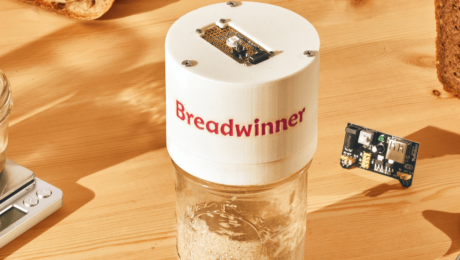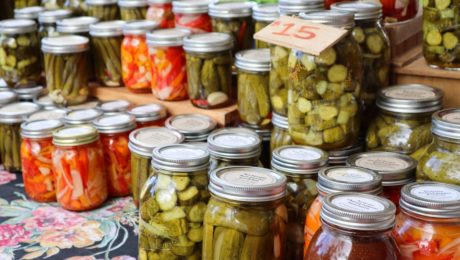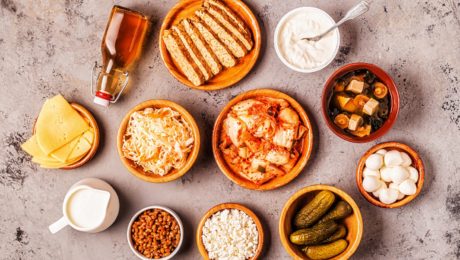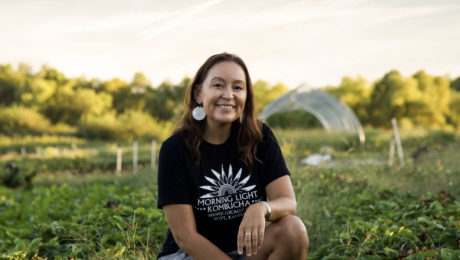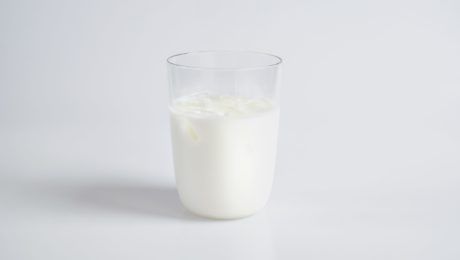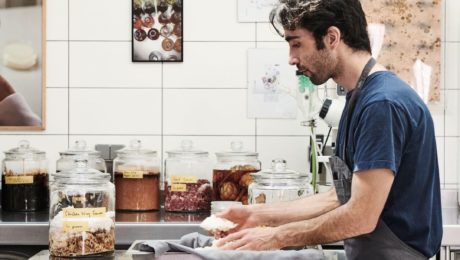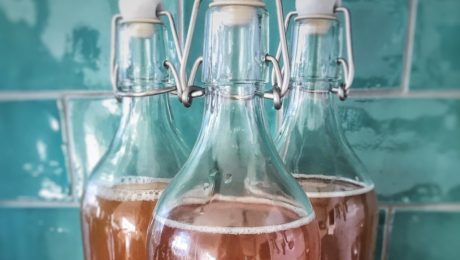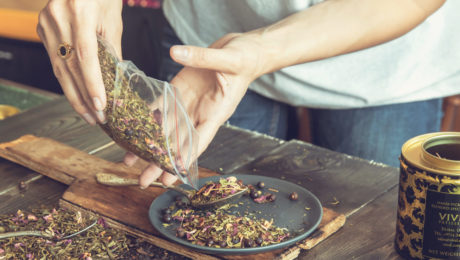FERMENTATION 2021 Wrap-Up
Nearly 300 individuals from around the world participated in The Fermentation Association’s first conference, FERMENTATION 2021. The virtual event included 35 educational keynotes, presentations, and panel discussions from more than 60 speakers over three days. Topics ranged from the science of fermentation to the art of fermenting to create flavor, from how fermented products are selling at retail to what’s next in the world of fermentation.
“I’ve been in this field for 40 years and, in all honesty, this is one of the biggest honors I’ve received, to be the speaker for this opening meeting of this really cool organization,” said Bob Hutkins, professor of food science at the University of Nebraska. Hutkins presented the conference’s opening keynote, Definition & History of Fermented Foods.
Over five years ago, John Gray, TFA’s founder, envisioned a trade show for producers of fermented foods and beverages, to make those artisanal items a more prominent part of the retail space. John connected with Neal Vitale, TFA Executive Director, and the organization was born out of their collective vision. TFA has grown, with a robust website, biweekly newsletter,a series of webinars and, now, an international conference. TFA has an Advisory Board that includes food and beverage producers, academics and researchers, and food and flavor educators and authors. TFA has formed working relationships with a number of other like-minded trade associations and organizations, and established a Buyers Council to create an active dialogue with food and beverage distributors, brokers and retailers.
“I have to tell you what a thrill it is to have you all here to witness and to participate in the beginning of a dream coming true,” added Gray in his welcoming remarks. Gray is the chairman and CEO of Katalina Holding Co., a food incubator and parent company of Bubbies Pickles.
FERMENTATION 2021 content paralleled TFA’s primary missions: first, help consumers better understand fermentation and its potential health benefits; second, work to improve health and safety regulations as they pertain to fermented products and third, connect the science and health research communities with producers, supporting scientific research and for a better understanding of the “state of the art.”
What made FERMENTATION 2021 unique is that it was the first event to bring together everyone involved in the world of fermentation — producers, retailers, chefs, scientists, authors, suppliers and regulators. The conference was not a how-to fermentation education event, as TFA feels there are numerous, effective resources for the person looking to, for example, make kimchi or learn about using koji.
“”We were delighted with how well FERMENTATION 2021 met — in fact, exceeded — our goals,” said Vitale. “While we were disappointed that the continuing impact of COVID-19 kept us from meeting in person, we were gratified by how all the participants responded, interacted, and engaged during our three jam-packed days. And, with recording of all our sessions now available online for our registrants, we expect that energy and excitement to continue.”,
“Fermentation is experiencing a major surge of interest in restaurants and kitchens around the globe,” says Amelia Nielson-Stowell, TFA Editor. “Our conference was a major milestone for the industry and we are already in the planning stages for FERMENTATION 2022 next summer. And, assuming we will be able to meet in person once again, we plan to host a tasting and sampling event for consumers alongside our conference.”
- Published in Business, Food & Flavor, Health, Science
The Next Frontier in Kitchen Appliances
Is fermentation the next big home kitchen technique? As more restaurants hire directors of fermentation, consumers are inspired to experiment at home.
An article in The Spoon makes a case for the rise of home fermentation equipment, which makes the process “a little less mysterious.”
“Fermenting is still viewed as something of a black art. Part of it is the weird and slightly creepy terminology (mother, anyone?). Mostly, though, it’s also because the act of farming bacteria to create tasty and healthy new foods is a far cry from the usual activity of assembling and cooking our meals in our kitchen.”
The article interviewed two entrepreneurs making their own fermentation devices: Breadwinner (which helps bakers know when their sourdough starter is ready) and Hakko Bako (a fermentation appliance). The creators say their products are making fermentation easy, controlled and approachable. Tommy Cheung of Hakko Bako notes food trends usually start in Michelin restaurants, then trickle down to casual dining and finally end up at the home kitchen. “I definitely think (home fermentation devices) are going to be a huge part of the future.”
Read more (The Spoon)
- Published in Business
The Brewing Coffee-Farming Crisis
Many pressures are building on coffee farmers, making their jobs increasingly difficult. Climate change is causing numerous impacts — temperatures are rising, rainfall is increasingly unpredictable, weather can swing from drought to flood, and new crop pests are emerging. And these problems are on top of existing environmental concerns, as growing coffee requires large amounts of water.
Further, studies show that, even with “modest declines of greenhouse gas emissions, about 50 percent of the land with conditions suitable for growing the two main species of coffee, arabica and robusta, which account for 99 percent of commercial supply, ‘could disappear by 2050.’ Brazil and Vietnam, major producing countries, would be especially hard hit.”
The Times details several organizations’ efforts to aid coffee farmers by restoring and protecting water resources, supporting more efficient use of water, improving crop yields with targeted fertilization and starting a global breeding network for new coffee species that can withstand tough climates.
Read more (The New York Times)
How Important is Consumer Education?
This is the second in a series of articles that TFA will be releasing over the next few months, analyzing trends from our Member Survey.
Fermentation is cloaked in mystery for many consumers — it’s bubbly, slimy, stinky and not always Instagram ready.
So how can fermentation producers appeal to potential consumers? What’s the best way to share fermentation’s flavor and health attributes?
In The Fermentation Association’s membership survey on industry trends, a better-educated consumer was identified as a priority. When asked what would foster increased consumption of fermented foods and beverages, the top item for nearly 70% of producers was greater consumer understanding of fermentation and familiarity with the flavors associated with fermentation.
“More than wanting to sell a product, I want people to know the information,” says Sebastian Vargo of Vargo Brothers Ferments (who is speaking at FERMENTATION 2021). The Chicago-based brand sells ferments like pickles, sauces and kombucha. “I believe preventative health starts with fermentation. I’m explaining the difference between a pickle you see on the shelf versus a pickle you see in the refrigerator. But I’m also teaching people to power up their pantry, sauce up their life with condiments.”
Health vs. Flavor
Producers say they struggle sharing fermentation’s benefits with consumers. There are not enough peer-reviewed scientific studies on many fermented products to be the basis for health claims.
“We feel a responsibility as a fermented food company to entice customers into trying these hugely beneficial and delicious products,” says Savita Moynihan, who owns SavvyKraut in Brighton, UK, with her husband Stevo. But, “with sauerkraut, it is generally understood that raw and unpasteurised kraut is good for you but once you try to elaborate on live culture vs probiotics it gets complicated, more than it needs to be.”
Can a brand claim to include probiotics? Producers feel that guidance is not clear.
“There is confusion here that we feel needs to be ironed out in order to loosen the reins so fermenters can promote their products and their benefits with much more confidence,” she adds.
Moynihan says that, when SavvyKraut sells at farmers markets and local shops, they try to communicate two main things to consumers. First, the health benefits, like enhanced vitamin and nutrient contents, increased fiber and an aid to a diverse gut and digestive system. Second, the delicious flavor.
“The process of fermentation really enhances the flavours and creates an entirely new type of flavour which can elevate any meal,” Moynihan adds.
Lack of Tastings Hurting Efforts
One of the best ways to familiarize consumers with fermentation is for them to taste a product — flavor is a great marketing tool. But COVID-19 has hurt these efforts. Producers are unable to stage in-store demonstrations, offer samples at farmer’s markets or host in-person events. This has been especially hard for kombucha brewers, says Hannah Crum(who is also speaking at FERMENTATION 2021), president of Kombucha Brewers International (KBI).
“We still have such a big part of the population who don’t drink kombucha or don’t even know about [it]; we still have a lot of work in education,” Crum says.
Joshua Rood, CEO of Dr Hops Hard Kombucha, confirms, adding: “It continues to be very difficult to grow our brand and the whole category without live events.”
“The inability to do live tastings in 2020 had a significant diminishing impact on our sales during the pandemic,” he continues. “One of our main distinctions as a brand is superior taste. Consumers, however, do not believe claims about that unless they experience it for themselves. Even now we are significantly hampered by the lack of large beer festivals and street fairs. An artisanal craft brand like Dr Hops needs those live interactions!”
The Knowledge Gap
Despite the lack of in-store tastings, experts at New Hope Network (producers of the Natural Products Expos) say brands have a great opportunity — now, more than ever, during the COVID-19 pandemic — to connect with their consumers.
New Hope’s 2021 Changing Consumer Survey found U.S. consumers are not satisfied with their current health. Only 8% say they’re “extremely satisfied” with their health today, compared with 20% in 2017. Nearly 80% of consumers understand that diet greatly influences their health (79%). But achieving good health is both a goal and a struggle for consumers — and this is where brands can step in.
“There’s a gap to be bridged,” says Eric Pierce, vice president of business development for New Hope Network, during a session “Understanding Your Consumers” at the most recent Expo East. “I see it as our opportunity and our responsibility to help consumers translate healthy intentions into healthy behavior, either in how we’re educating them in our stores, the products that we’re innovating or the ways we’re communicating. Getting better at communicating can help them with solutions.”
A consistent, transparent, well-communicated message — from product label to social media page to website — is important. Pierce says consumers quickly see past “shallow marketing claims.”
“Leave a trail of breadcrumbs people can find,” Pierce advises. “You don’t have to communicate everything all at once, but allow people to follow a trail to the deeper story. When consumers want to find that trail, if it’s not there, they’ll quickly write you off as shallow with unbacked claims.”
Amanda Hartt, market research manager at New Hope, suggests putting a QR code on a product label that links to the science backing the benefits of your ingredients. Or partnering with a registered dietitian on social media to highlight how to use your product as part of a healthy diet.
[To learn more about this topic, register for FERMENTATION 2021 to hear one of the keynote panels “Educating Consumers About Fermentation.”]- Published in Business, Food & Flavor, Science
Q&A: Melinda Williamson, Morning Light Kombucha
Melinda Williamson has always been fascinated by plants — she grew up watching her mother make baby food with produce from the garden, later studied medicinal plants in college and dedicated her career as an ecologist to researching microbial communities in soil.
So, when Williamson became extremely sick with an autoimmune disease eleven years ago, it was not surprising that she turned to plants. She began making green smoothies daily and, after a student shared a bottle of it with her, drinking kombucha.
“I became really conscious about what I was putting in my body, really focusing on where my food was coming from,” says Williamson, founder of Morning Light Kombucha in Hoyt, Kansas. “I started researching my illness, and found that a lot of stuff stems from the gut. It brought me into this world of ferments.”
The health-scare-turned-health-revival changed the course of her life. Mother of a then-young child, Williamson moved back to Kansas to raise her daughter closer to family. She took a language program job on the Prairie Band Potawatomi Nation reservation in her hometown, then spent her hours off work fulfilling a dream of running her own business. She perfected a home-brewed kombucha and began selling it at local farmers markets, gas stations and yoga studios.
The pandemic easily could have shuttered a small brewery like Morning Light which, prior to 2020, Williamson ran on her own. But she designed a website, opened an online store, started curbside delivery and launched a canned line — and sales grew by 25%. By the end of 2021, Morning Light Kombucha will start shipping nationally and, by the end of next year, they plan to break ground on a 4,000-square-foot facility on the reservation.
“What I really want to do is get my product into more native communities, so they can find healing just like I found healing,” says Williamson, head of the only Native American kombucha brand. “That’s more important to me than seeing my product on the shelf of Wal-Mart or Target. I’m not in it to be rich. I still plan on living in my little house here on the reservation close to my family. I just want to do something that has meaning and an impact.”
Below is an edited Q&A between Williamson and The Fermentation Association.
TFA: Where do you get your ingredients? You forage some of the ingredients yourself on the reservation.
MW: We go out and harvest wild blackberries, wild raspberries, chokecherries and pawpaws mostly on the reservation. There’s edible plants everywhere, it’s surprising the places you can find them. We just went to Overland Park, which is the city near us, to forage for pawpaws.
Some of the ingredients like gooseberries, those we find in small quantities. If we go out and we only get four cups of berries, we may not make any kombucha with it. But sometimes I’ll make a little five gallon batch.
Most of our ingredients, we partner with local farms in Northeast Kansas. It comes down to the importance of knowing where our food comes from. My goal was to always work with local farmers and source ingredients locally, I knew I wanted that as part of my business foundational value.
As much as possible, we keep sustainability at the forefront of everything that we do, being really conscious about our footprint. It’s really nice because, being in Northeast Kansas, people aren’t thinking about stuff like that. They’re more and more thinking about where their food comes from, but it’s been really nice to have those conversations with the community and get people really thinking about supporting the local farming economy, supporting local business.
A big part of it really comes down to what we’re showing our kids. Before my daughter was born, I had her when I was 23, I was eating a lot of fast food. I was like “I’m free! I’ve got a job! I can buy and eat whatever I want!” I was eating so much junk food. And then I got pregnant and wanted to feed her properly. I grew my own garden and started making my own baby food, just like my mom modeled for me. Food is so important, it’s a constant conversation in my life and in my business.
TFA: Do you make seasonal flavors then?
MW: We launched our canned kombucha line in February. Prior to that, we were doing about 100 flavors a year, so now that we’ve launched our canned kombucha line, we’ve had to whittle that down because we have to have four flavors constantly. Our rotations have diminished a little, but we’re still putting out about 60 flavors a year.
Our berry flavors are our most popular — blackberry lemongrass and strawberry. Seasonally, our smaller batches that people love are mulberry, that is a top seller. People also love the ginger and chokecherry flavors.
TFA: How do you sell your small batches? Are you selling them retail or filling kegs on site?
MW: We sell direct-to-consumer, like at the farmers markets and events. We don’t have a brewery that’s open to the public. We do curbside pickup, that was something that was developed in response to the pandemic. We could no longer sell directly to the consumer, so we just started doing doorstep delivery, then the curbside pickup. Basically, people just have their empty bottles in their trunk and call us and we come out and grab their bottles, and swap them for new, filled bottles. It’s contactless, but we still got to see our customer and wave. We’ll probably continue to do that, we’re still in this pandemic, and the most important thing is to keep our community safe and our elders up here safe. We will continue taking all precautions to protect people around us until we hit a safe spot.
TFA: A portion of your sales goes back to the native communities. Tell me about that.
MW: We donate where we feel like the money would be used best, things that we’re passionate about and things where we see we can make a difference. For example, we just recently donated to one of the residential school survivor nonprofits. We’ve taken clothes to Standing Rock Sioux Tribe where they were protesting the Dakota Access Pipeline, we’ve donated to our Boys and Girls Club here on the reservation, we’ve donated to our youth soccer teams, we’ve donated to First Nations programs in Canada.
TFA: Morning Light Kombucha is a trademark American Indian Food product. What does that mean?
MW: So that trademark American Indian Food falls under the Inter-Tribal Agricultural Council, which is a subset under the USDA. The program really highlights American Indian food producers. You apply and then the program supports you in different ways. We’re able to network with other American Indian food producers, brainstorm together and talk about what we’re experiencing and try to make movements when it comes to distribution. The program is really big with international exporting, so all the American Indian food producers have the opportunity to attend large trade shows internationally, they’ll fly us there, ship our products and give us the opportunity to have a booth and get our product in front of people who are interested in American Indian food products. I’m not ready for something that big, I am so small, but I’ve gone to a domestic show through the program. I went to a food show in Chicago and got in front of a lot of people who are interested in my kombucha. We have really big plans in 2022 to expand our facilities, and hopefully expand domestically.
TFA: What are Morning Light Kombucha’s plans for 2022?
MW: I just bought 10 acres here on our reservation. My plan is to break ground and build a production facility. It will be three times the size of what we’re in now, which will be really, really nice. There’s a pond on the side, we’ve got a creek, timber, a lot of foraging areas. The plan is to build an off-the-grid brewery, too, so it will help us provide more jobs in our community and it will allow us to do some of the things that we haven’t been able to do.
I mentioned sustainability is a big part of what we do. We compost 100% of our brewery waste, but I have to truck it to my house to my compost pile because, where we’re at now, we just can’t compost large quantities at our site. The waste water from our water filtration system, it’s totally usable water, but we don’t have any place to store it currently. Our waste water is not like gray water, it’s clean water that’s just wasted during the filtration process, it’s usable. For every one gallon that’s filtered, there’s three gallons that’s wasted. It’s so insane, it killed me when I found that out. Once we are in our new facility we can begin to recycle it on property. We have this dry pond. Our plan is to see if we can get it lined, divert the waste water in there and start filling the pond.
TFA: Scaling will be big for you in 2022.
MW: I know, I just hired three employees recently because it’s just been me for the past few years. I work part-time for our language department, and my kombucha business has been my side hustle. In the past year, I’ve realized the potential. People really like my brand and they’re noticing it and requesting it. So I thought “Maybe I could grow this brand into something bigger.”
TFA: I am beyond impressed — you have been building a kombucha brand by yourself?!
MW: Family is always there for me. My boyfriend is at the market, my nephews help with anything I need, it’s a family affair even though I never really had anybody on my payroll until recently. Now I’m getting to a point where I need help all the time. I hired my sister as my brewery manager, she keeps a tight ship. It’s allowed for me to really work on expansion while she’s running operations at the brewery.
TFA: Yours is still the only Native American-owned kombucha brand.
MW: With my business, I like to think that I’m also giving a voice to native issues. I would never want to be an authority on native issues, but there’s a lot of things going on in Indian country that people don’t see in the mainstream media and mainstream social media. If I can build a brand that can also bring awareness to these things, that’s really important to me.
TFA: You have a background in academia. What got you interested in ecology before switching to kombucha?
MW: I’ve always loved science, I’ve always loved the outdoors, I’ve always been super eco-friendly, I’ve always been conscious about our impact on the earth. I love animals, I love nature. I was taking some of my general ed classes at Haskell (Indian Nations University) and took an ethnobiology class. I just fell in love. I ended up transferring to Kansas State and got my degree in environmental biology (then a masters degree in rangeland ecology and management from Oklahoma State University.) I went with my boss from K State to Oklahoma State and ran the grassland ecology lab for years.
TFA: Where do you see the future of fermentation?
MW: There’s an explosion. I see it continuing to grow and expand and people are coming out with really innovative ways to bring fermentation to the table. Like Wild Alive Ferments out of Lawrence, Kansas. We’re a part of a local CSA with them. The owners just came out with an apple kraut flavor, an autumn harvest with spices that is so amazing.
In the U.S. especially, we have a lot of people who are sick with illnesses or cancers and autoimmune issues and I think we’re starting to see more people look at what they’re putting in their bodies. They’re realizing the importance of gut health, the importance of ferments, and that it affects so much more than just your gut. It’s a movement — and I’m really excited about it.
- Published in Business, Food & Flavor, Health
Dairy Alternative from Fermented Pea & Rice
Researchers have discovered a milk alternative: fermenting pea and rice with probiotic strains. This dairy-free mixture is highly digestible and has the same animal protein as found in milk, casein.
Fermentation was critical to the results. Plant-based proteins are poorly digested because they are often insoluble in water, explains Professor Monique Lacroix of Institut National de la Recherche Scientifique (INRS). Animal proteins, in contrast, “usually take the form of elongated fibers that are easily processed by digestive enzymes.” But lactic acid bacteria in the fermented pea and rice drink predigested the proteins, improving digestibility.
“Fermentation allowed for the production of peptides (protein fragments) resulting from the breakdown of proteins during fermentation, facilitating their absorption during digestion,” notes an article on the research in Nutrition Insight.
INRS partnered with probiotics company Bio-K+ on the research. Their findings were published in the Journal of Food Science.
Read more (Nutrition Insight)
- Published in Science
Jason White:“It’s Cool to be a Fermenter”
While more chefs and cooking enthusiasts are experimenting with fermentation, they’re skipping the basics and jumping straight to complicated dishes. The foundational steps of cooking are fine-tuned only with time and patience, with hours spent mastering the simple recipes first, according to Jason White, director of the fermentation lab at Noma restaurant.
“It’s just as important for you to make a delicious pickle and a wonderfully balanced kombucha as it is for you to make an incredibly long-aged batch of miso,” White says. “We can never forget that, whenever we start approaching these biological processes and these fermentation processes, that we also take advantage of the beginning stages of learning each individual step along the way. I can’t tell you how important it is for a person who’s emerging into the art of fermentation to stop and pause for a minute and take the opportunity to connect dots. Each microbe that we’re using to ferment things has some kind of mechanism, and an ingredient that we’re going to ferment has a composition that benefits that microbe.”
White spoke at Harvard University’s Science & Cooking Lecture Series, on the topic Fermentation: A Springboard for Modern Gastronomy. He began his director role at Noma last year and has since helped the world-famous restaurant earn its third Michelin star in September.
In his lecture, White stressed observational skills — honed in the early years of learning to ferment — are one of the most important qualities for a fermenter. The best way to “really understand what an ingredient is and what it has to offer a microbe” is through the senses. When you cut into the ingredient, does it feel dry? Does it smell of essential oils? Does it taste overripe?
“Fermentation is one of those weird occurrences in nature where humans intentionally create something only to watch it decompose, and when it decomposes it produces something that’s more valuable to us,” White says. “I am not a chef, I am not a scientist, I am a dreamer and I am a fermenter and my life journey is going to be dedicated to the act of microbial processing.”
From Texas to Denmark, Fermenting with Local Agriculture
A native of Albuquerque, New Mexico, White began a career as a fermentation consultant for restaurants and distilleries in Texas. He worked for two years at Noma before returning to the U.S. in 2019 as head of the food research lab at Audrey restaurant in Nashville.
The early days of his career in gastronomy weren’t spent in beautiful, state-of-the-art kitchens like those at Noma. White’s first experiences as a professional fermenter were spent cooking in a small wooden shed in the Texas heat.
Environment is a critical element to fermenting. Texas is vastly different from the areas that are the globe’s cornerstones of fermentation — Japan, Korea and Taiwan — and which had inspired White. Texas, for example, doesn’t have a huge variety of mushrooms or produce — but it does have chilies and lots of grains.
“I found a lot of joy adapting traditional recipes into something that was based off Texas agriculture,” White says. Much of his fermentation in those days was driven by koji, which grows well on the grains common to Texas.
White learned a key lesson that he incorporates in his cooking: use the local ingredients and agricultural systems available in the area.
“Every single ingredient on earth, you’re going to find something that is valuable to a fermentation process,” White adds. “Even if we can’t consume it as humans, you can use the fermentation process to make it more delicious.”
Respecting the Past, Propelling the Future
Fermentation has been around since the beginning of humanity. When we ferment, White says, we’re recreating the environment and the processes traditionally used where the ferment was first discovered and practiced.
“And, as fermenters, we are also carrying the knowledge of these practices through the generations,” White says. “And where we are with fermentation, it’s kind of like emergent pop cultures. It’s cool to be a fermenter.”
White characterizes his fermentation style as “somewhere between a control freak and a naturalist.” Fermenters have a “huge sense of responsibility” to maintain food safety, carry on traditional processes and teach new fermenters. …We are protectors of knowledge, we are protectors of ingredients and we are protectors of history.”
Whether fermenting at home for personal use or in a production facility for consumers, “We are all still changing the way microbes are evolving and we’re all still participating in the ancient act and it is truly beautiful….if anyone in this room wants to ferment, you are literally the future of fermentation.”
During his presentation, White demonstrated how to ferment persimmons. In Texas, local farmers would bring persimmons to the restaurant where he worked. They were hard and unripe, not flavorful enough to eat raw, so White soaked them in amazake, a fermented rice beverage. During his lecture, White sliced bright orange persimmons for an amazake bath.
“The beauty in this whole entire thing isn’t how complex it is,” White says. “Fermentation doesn’t have to blow your mind, you don’t have to be like ‘Oh my god, it’s completely transformed, it’s something I don’t even recognize and it makes my palate explode with flavor.’ No. Fermentation could also be something that respects an ingredient and leaves it as is. But enhanced fermentation is something that can make something that is not as valuable as it should be more valuable again. You can turn something that would maybe go in the trash…into something very delicious.”
- Published in Food & Flavor
Ireland’s Fermented Drinks Under Scrutiny
After a study found 91% of plant-based, fermented drinks in Ireland make unauthorized health claims, the Food Safety Authority of Ireland (FSAI) has published a guide on how to produce such beverages safely and label them accurately.
The FSAI examined 32 unpasteurized drinks currently sold on the Irish market – including kombucha, kefir and ginger soda – and found that most did not comply with EU and Irish food labelling and health regulations. The study found 13% had alcohol levels above labelling thresholds, and 75% lacked required label information, like the address of the producer and “best-before” date.
“The methods used in producing unpasteurized fermented plant-based products can be difficult to manage,” notes Dr. Pamela Byrne, FSAI chief executive. “The guidance will help producers to achieve consistent production methods, safe storage, safe handling and safe transportation of fermented beverages.”
Read more (Agriland)
Like the Flavor of Black Tea? Thank Fermentation
Tea connoisseurs have long believed that black tea’s flavor comes from the chemicals created during oxidation, but a new study reveals microbes at play. Black’s tea’s rich flavor is partly due to fermentation, the same microbial process used to create fermented teas like kombucha, jun and pu’erh.
What does this mean for tea producers? By adjusting the microbes on the tea leaves, fermentation could amplify the flavor in the final brewed cup of tea.
“The finding that bacterial and fungal communities also drive tea processing suggests the microbiome of the leaves can be manipulated to create greater quantities of tasty compounds due to fermentation,” says Dan Bolton, founder, editor and publisher of Tea Journey.
In research published in the Journal of Agricultural and Food Chemistry, a team of scientists from Anhui Agricultural University in China studied how sterilization of tea leaves affected tea flavor. They began by sampling the microbes on leaves from the Dongzhi tea plantation in Anhui province. Half the leaves were sterilized in mild bleach for five minutes — the other half were left untouched. All the leaves were then processed traditionally: withered, rolled, oxidized in the sun and dried.
Their conclusions found black tea produced through microbial fermentation from the unsterilized sample was full of catechins and L-theanine. Catechins are flavonoids and a naturally-occurring antioxidant; L-theanine is an amino acid (also found in mushrooms) known to ease stress and insomnia. Both compounds help make tea flavorful. The sterilized leaves produced tea that didn’t have the same amount of compounds, and so wasn’t as flavorful.
“The sterilization process dramatically decreased the content of total catechins and theanine in black tea, indicating that microbes on the surface of tea leaf may be involved in maintaining the formation of these important metabolites during black tea processing,” says Ali Inayat Mallano, PhD, professor at the university.
Interestingly, sterilization had no effect on green tea. Both samples of green tea, sterilized and unsterilized, had the same levels of caffeine and theanine.
[To explore premium dark teas, TFA recently organized a webinar Beyond Kombucha: Pu’erh, Jun and Dark Tea with Bolton and tea experts Jeff Fuchs (author, Himalayan explorer and co-founder of Jalam Teas) and Brendan McGill (chef and James Beard nominee who owns Hitchcock Restaurant Group in Seattle and Junbug Kombucha).- Published in Food & Flavor, Science


